Why you can trust Tom's Hardware
Comparison Products
Up against the LaCie Rugged SSD, we put a whole assortment of 10 Gbps competitors. From Samsung, we included the new T7 Touch, as well as the Thunderbolt 3 enabled X5. From Lexar we added the SL100 Pro, another JMS583-based portable SSD. We also threw in SanDisk’s Extreme Pro and the older Extreme model. And, with value in mind, we included Adata’s IP68-rated SE800, as well as Crucial's X8, a QLC NAND-based competitor. Finally, just for comparison's sake, we added in a 5TB WD My Passport and a 2TB LaCie Mobile Drive, both HDD-based solutions.
Transfer Rates – DiskBench
DiskBench is a storage benchmarking tool that allows us to test the transfer or copy performance of a storage device with real data. We test external drives with three file transfers that consist of 25GB of photos (10GB of jpgs and 15GB of RAW photos), 50GB of movies, and 25GB of documents. First, we transfer each folder from a 1TB NVMe SSD to the external device; then we follow up by reading a 3.7GB 7-zip file and a 15GB movie back from the device.
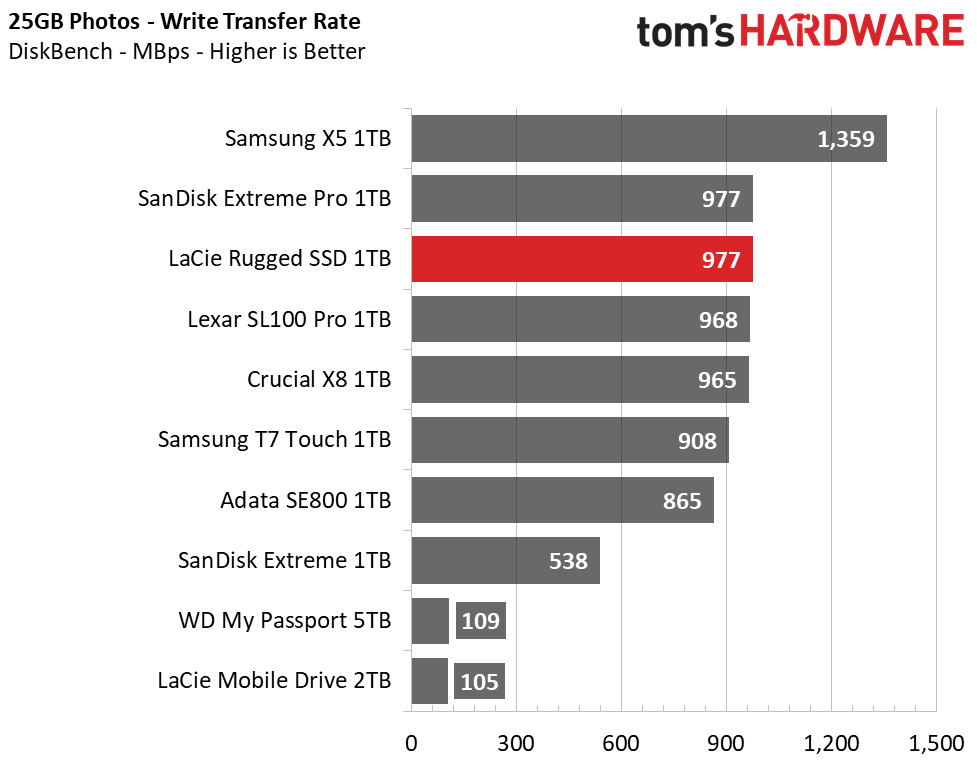
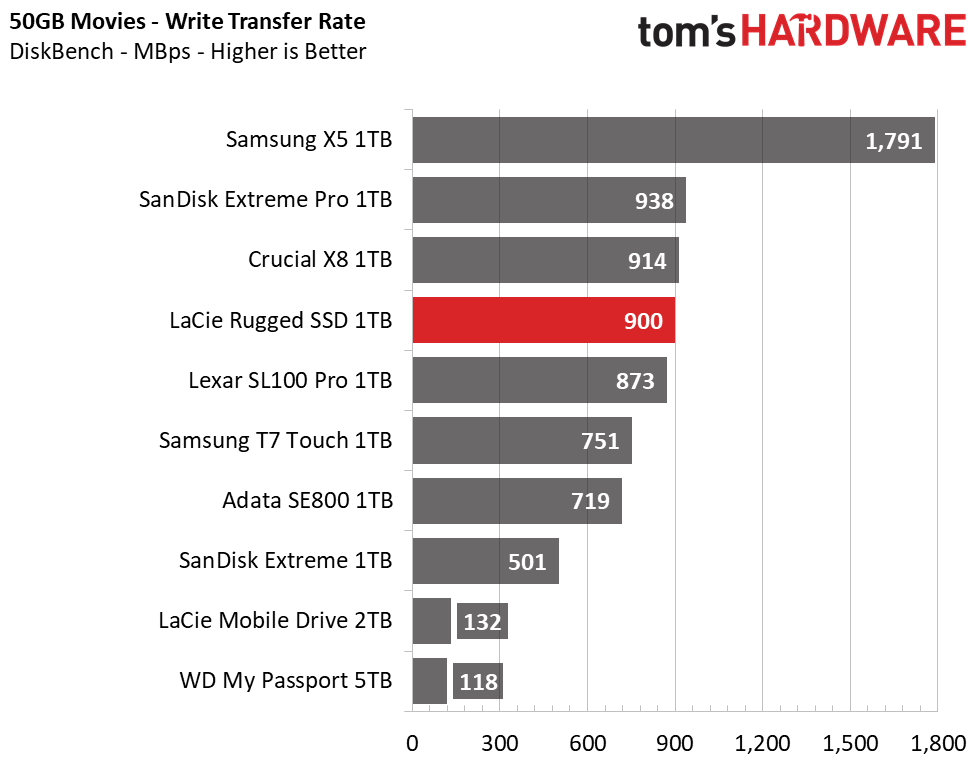

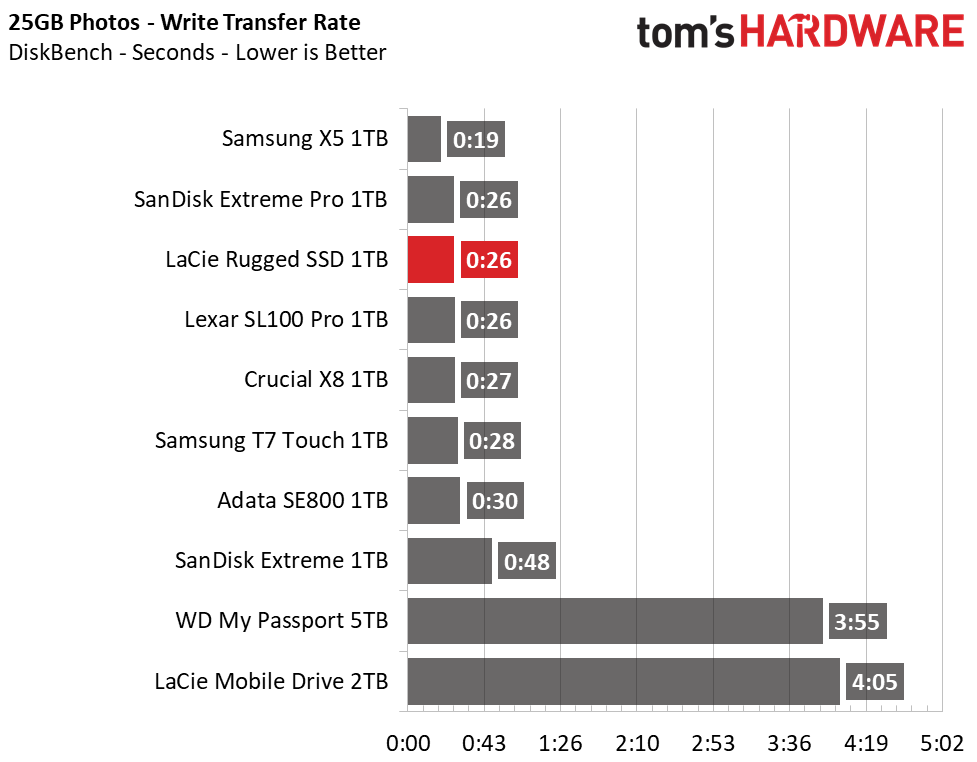
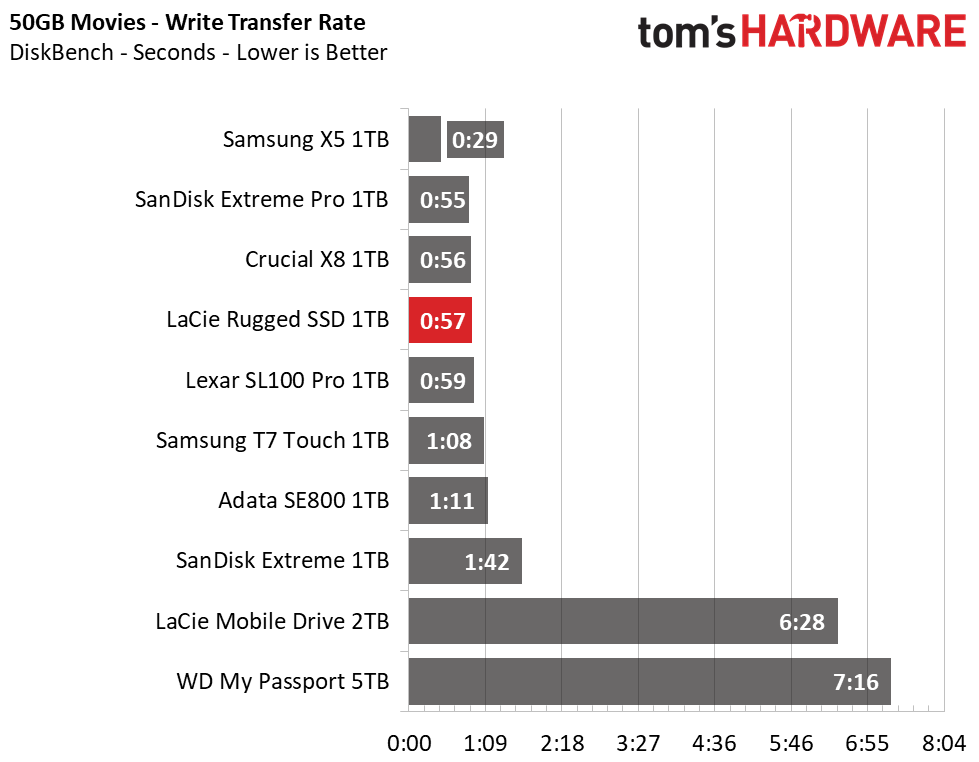


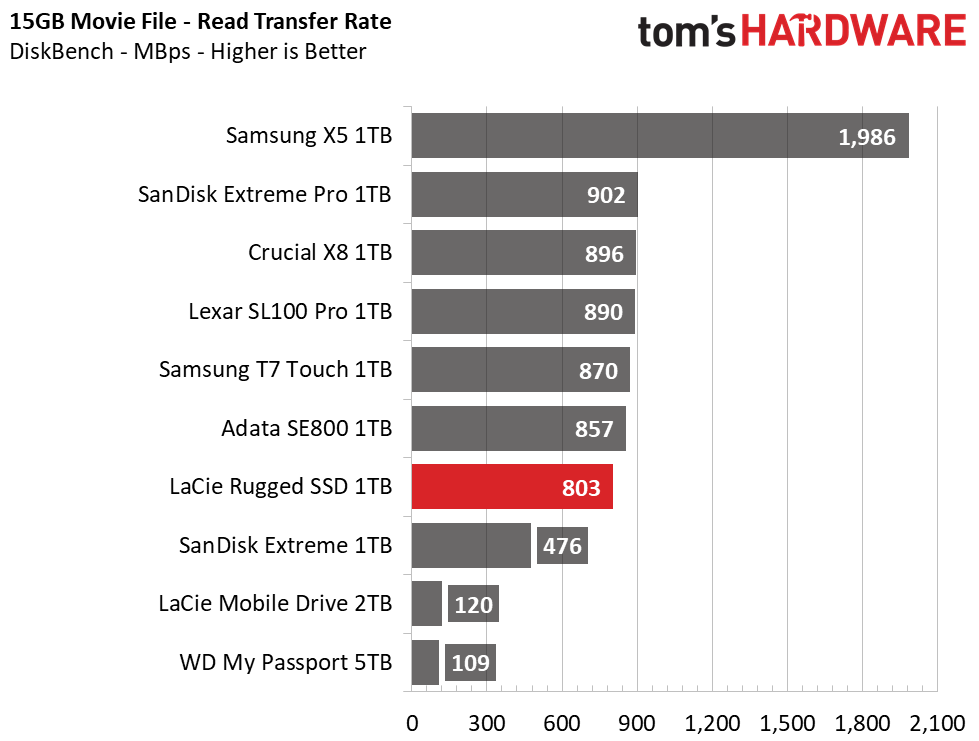

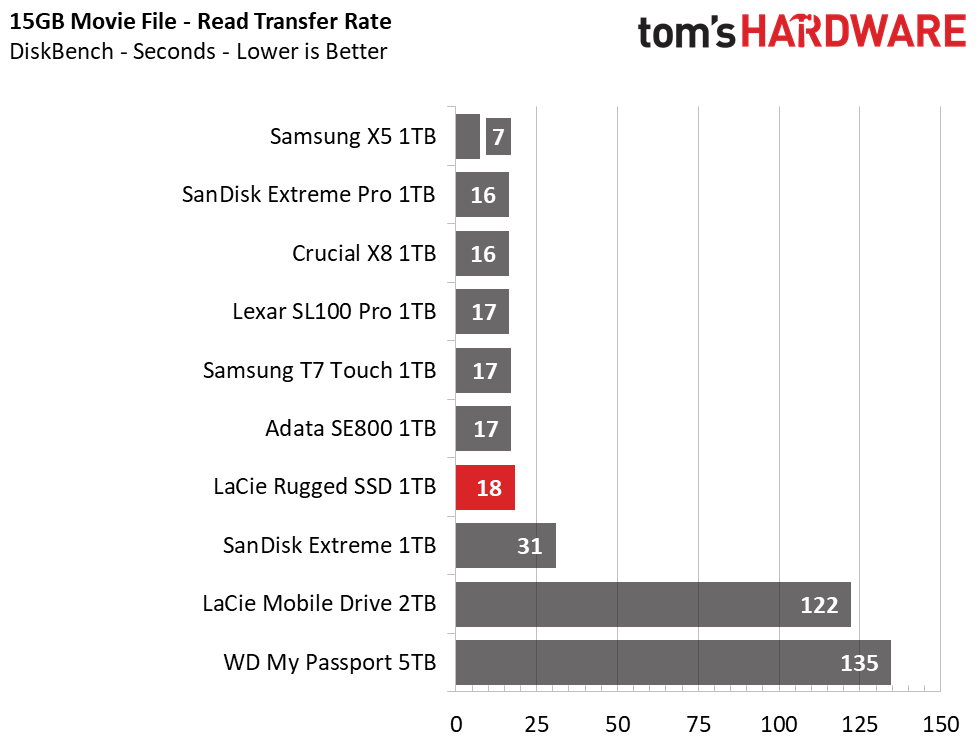
Thanks to the massive bandwidth available to it, Samsung’s X5 dominates in file transfers. But, these 10Gbps devices give it a good run for its money. Close to SanDisk’s Extreme Pro, LaCie’s Rugged SSD performs like the best of them in the write tests, ranking third or fourth place, depending on the transfer.
The LaCie's erformance in reading large files could use some minor improvement, however. In reading our 3.7GB .zip and 15GB movie files, it fell behind both Adata’s SE800 and Samsung’s DRAMless T7 Touch by a second. Crucial’s X8 is a value option, but it puts up a good fight in transfers under 100 GB , and large reads are faster than the Rugged SSD too.
Trace Testing – PCMark 10 Storage Test: Data Drive Benchmark
PCMark 10 is a trace-based benchmark that uses a wide-ranging set of real-world traces from popular applications and common tasks to measure the performance of storage devices. To test drives that store files rather than applications, we utilize the Data Drive Benchmark.

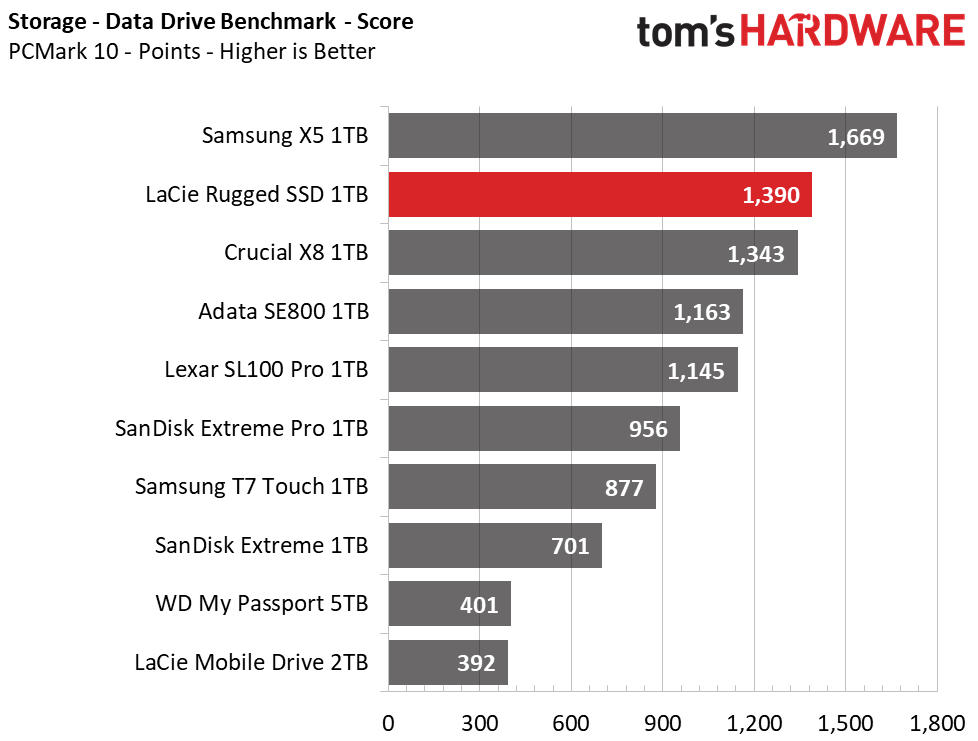
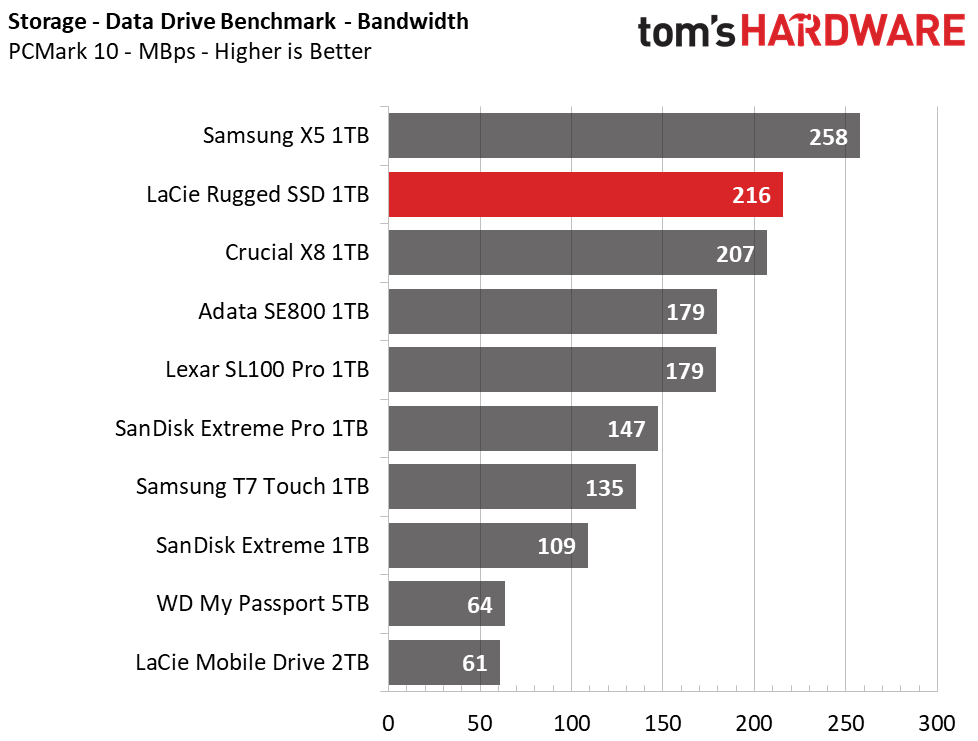
In PCMark 10, LaCie’s Rugged SSD outperforms all the other 10 Gbps SSDs in our comparison pool. It ranks second overall, just behind the Samsung X5. In simple day-to-day use, in transferring your average photo folder or files folder, the Rugged SSD will be much more responsive than an ordinary HDD. Here, the average response time is about a quarter of a second faster, but the overall bandwidth is over three times faster than any external HDD. This makes working off of one of these so much better for videographers and those wanting speed, consistent low latency and high bandwidth.
Synthetics - ATTO
ATTO is a simple and free application that SSD vendors commonly use to assign sequential performance specifications to their products. It also gives us insight into how the device handles different file sizes.
Get Tom's Hardware's best news and in-depth reviews, straight to your inbox.
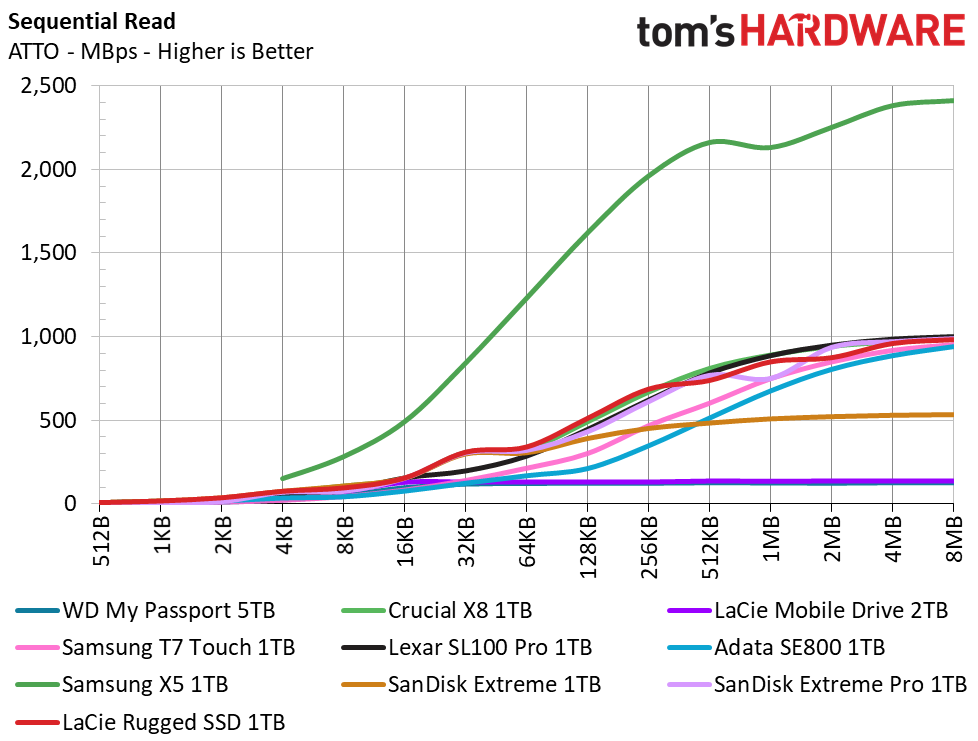
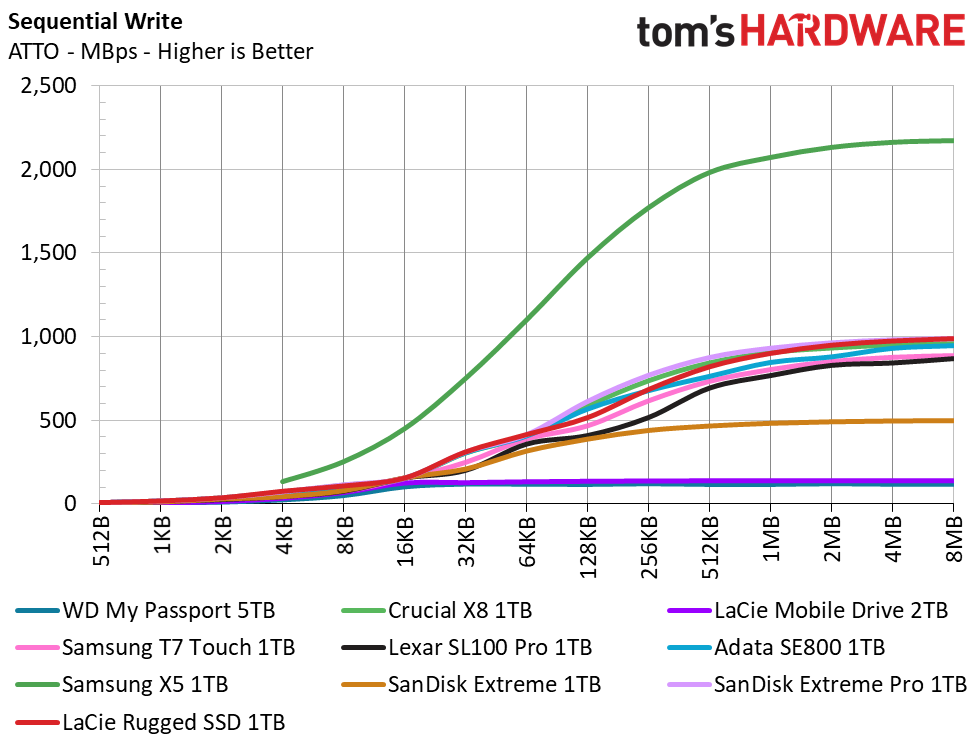
In ATTO, we tested LaCie’s Rugged SSD at a QD of 1, representing most day-to-day file access at various block sizes. Here it shows off high throughput over almost all smaller block size,s up until 512KB. Then beyond that most of these 10 Gbps SSDs exhibit the same performance, peaking at about 900-1,000 MBps.
Synthetics - iometer
iometer is an advanced and highly configurable storage benchmarking tool that vendors often use to measure the performance of their devices.

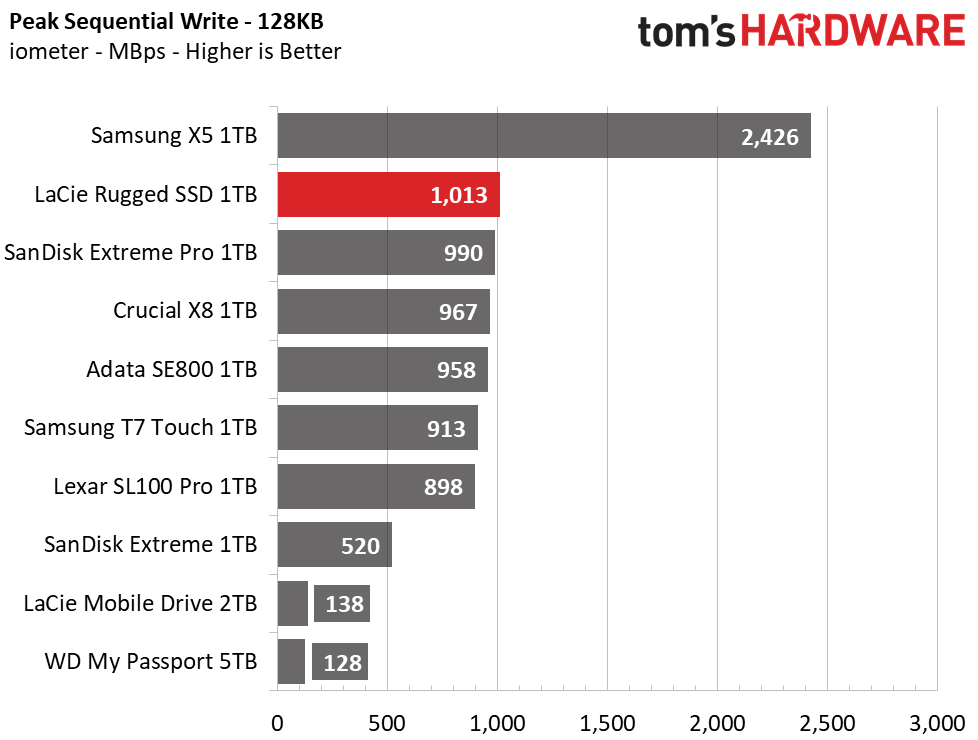

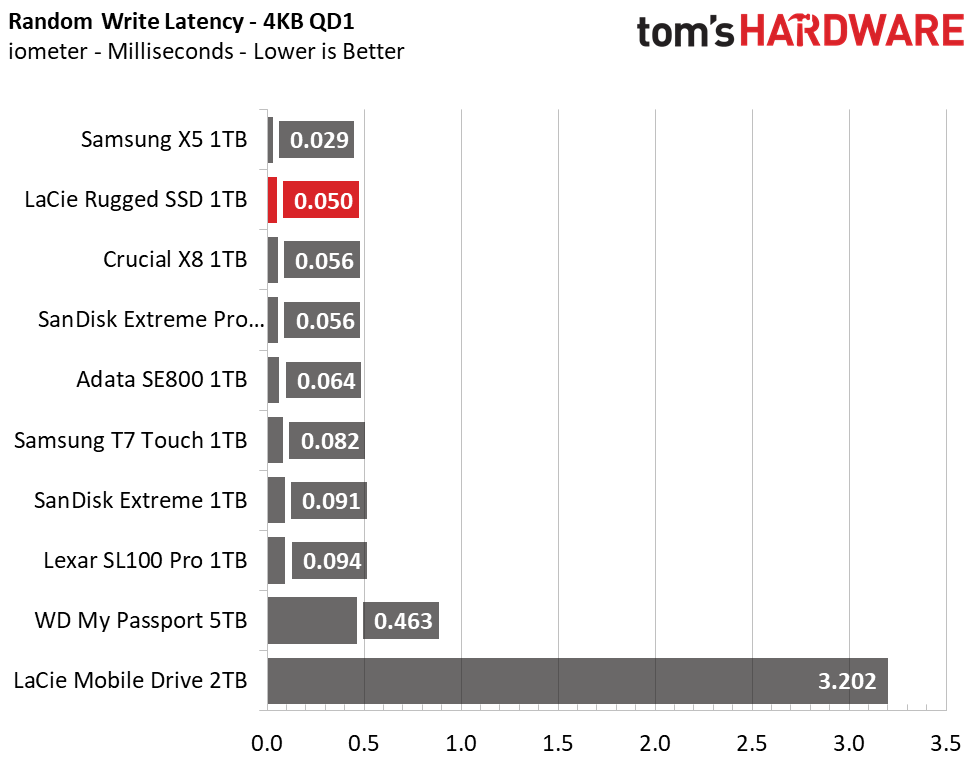

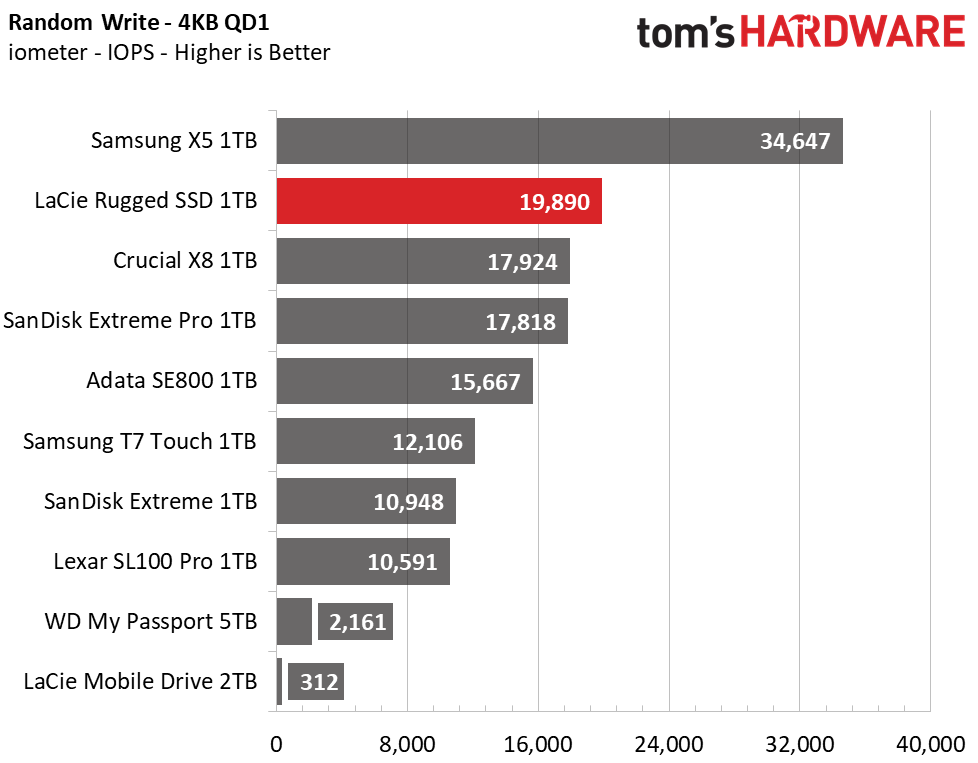
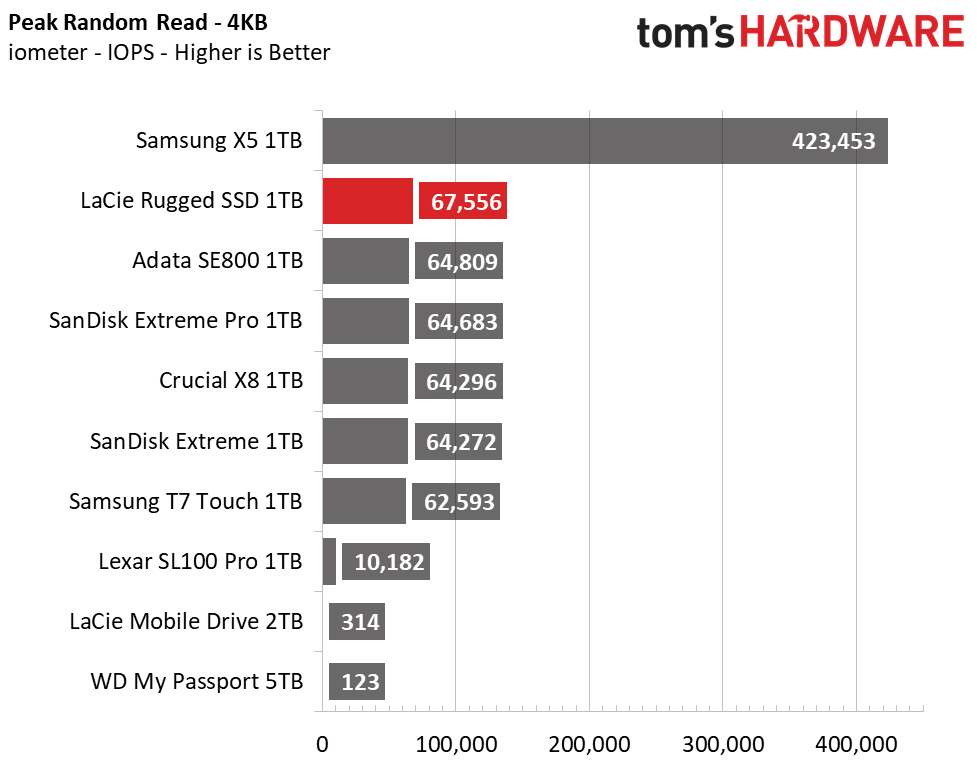
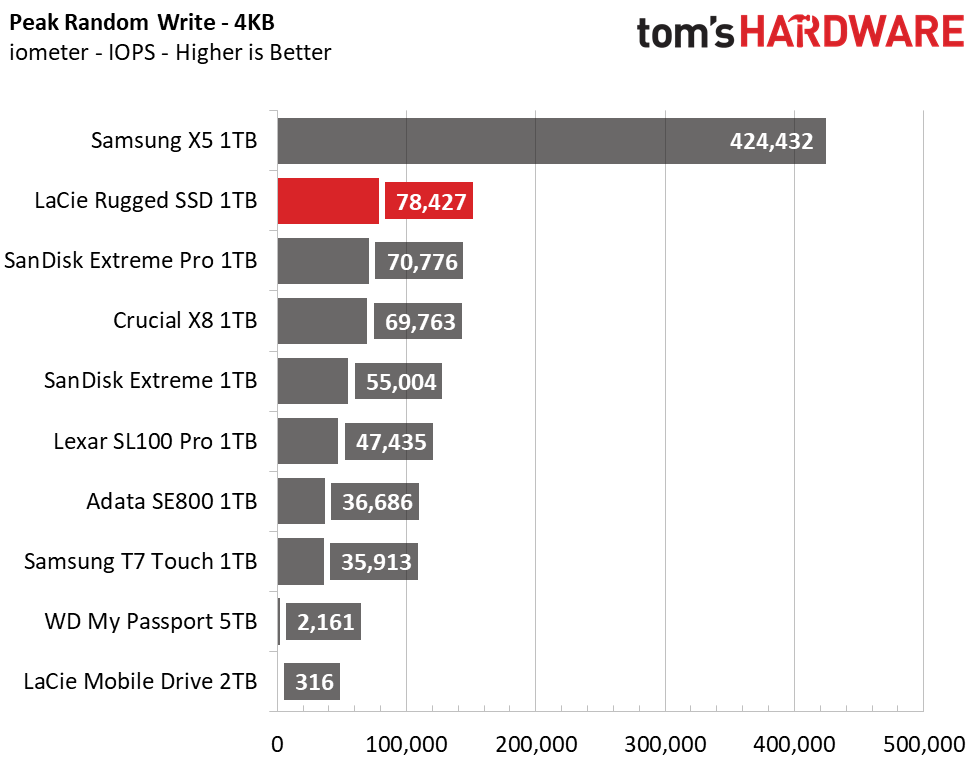
In testing with iometer, we measured peak sequential throughput of 984/1,013 MBps read/write, ranking it second only to the Thunderbolt 3-powered Samsung X5. Random performance at QD1 is average for an external NVMe SSD, although it seems that there could be some improvement in reading.
Crucial’s X8, even though it features inherently slower QLC NAND, its random read responsiveness is faster than that of the Rugged SSD and SanDisk Extreme Pro.
Sustained Write Performance, Cache Recovery, and Temperature
Write speed and temperature are two important and inter-related metrics for external devices. We tossed in this one last test to measure the performance of the drive over a 15-minute window, writing to the full span of the drive. This test reveals if the drive has a pseudo-SLC cache, which is a small portion of faster-programmed flash that absorbs incoming write workloads. We also monitor cache recovery via multiple idle rounds.
When possible, we also log the temperature of the drive via the S.M.A.R.T. data to see when (or if) thermal throttling kicks in and how it impacts performance. Bear in mind that results will vary based on the workload and ambient air temperature.

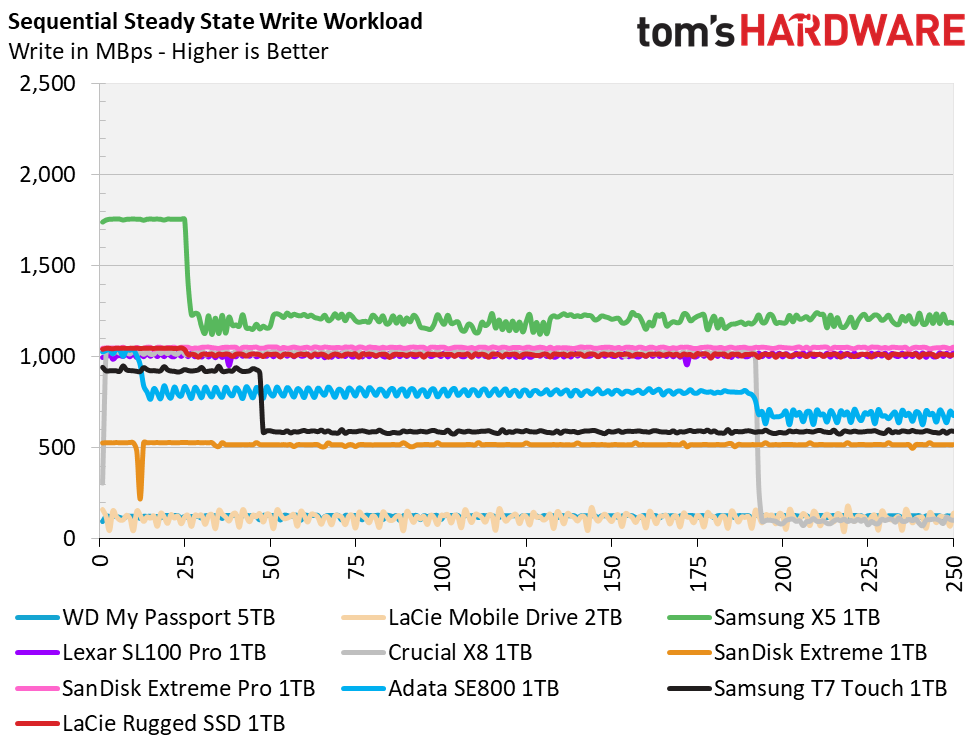



No matter how much data is written, LaCie’s Rugged SSD writes very quickly, similar to the SanDisk Extreme Pro. The LaCie features a small 24-26GB write cache that writes at about 1,050 MBps. Once it fills, write performance degrades, but not too much. At worst, it fell to an average of 1,015 MBps from there on out, which is still fantastic. And, if you need that extra few MBps, the cache recovers after a minute or so of idle time.
In transferring around 280GB of data to the external over four separate drag-and-drops, the S.M.A.R.T. data reported a controller temp of just 39 degrees Celsius. This is much cooler than the source NVMe SSD, which reported in at over 55 degrees Celsius with a fan cooling it. The external surface of the Rugged SSD remained under 36 degrees Celsius while testing.
MORE: Best SSDs
MORE: How We Test HDDs And SSDs
MORE: All SSD Content

Sean is a Contributing Editor at Tom’s Hardware US, covering storage hardware.